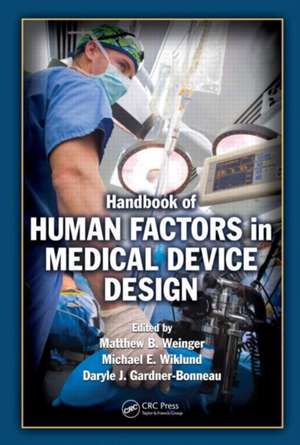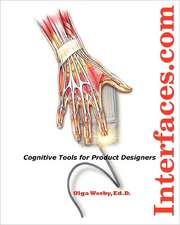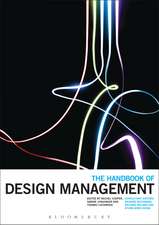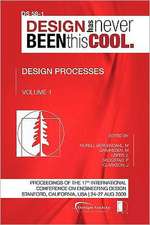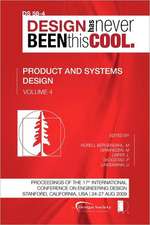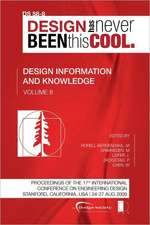Handbook of Human Factors in Medical Device Design
Editat de Matthew Bret Weinger, Michael E. Wiklund, Daryle Jean Gardner-Bonneauen Limba Engleză Hardback – 13 dec 2010
The book sets the foundation with coverage of fundamental topics such as aligning the interactive nature of medical devices to the expected use environments ranging from hospitals and ambulances to patients’ homes, drawing on anthropometric and biomechanical data to ensure that designs match the intended users’ bodies and physical abilities, and conducting usability tests and other evaluations to ensure that devices perform as intended. It then focuses on applied design issues, offering guidance on the design of specific types of devices and designing devices for particular use environments. Adapted in part from established design standards and conventions, the design guidance presented in this work distills professional judgment extracted from the contributing authors’ years of experience in applied analysis and design.
Written in true handbook style, each chapter stands alone and includes tables, illustrations, and cross references, allowing you to quickly find the exact information you need. Most chapters begin with a general introduction to the selected topic, followed by the presentation of general and special design considerations and then specific, numbered design guidelines. The book also presents a listing of resources, literature, and website references. It not only focuses on the human factors issues that arise when developing medical devices, it supplies the necessary guidance to resolve them.
Preț: 1588.90 lei
Preț vechi: 1937.68 lei
-18% Nou
Puncte Express: 2383
Preț estimativ în valută:
304.13€ • 330.47$ • 255.64£
304.13€ • 330.47$ • 255.64£
Carte tipărită la comandă
Livrare economică 21 aprilie-05 mai
Preluare comenzi: 021 569.72.76
Specificații
ISBN-13: 9780805856279
ISBN-10: 0805856277
Pagini: 842
Ilustrații: Illustrations
Dimensiuni: 178 x 254 x 43 mm
Greutate: 1.72 kg
Ediția:1
Editura: CRC Press
Colecția CRC Press
Locul publicării:Boca Raton, United States
ISBN-10: 0805856277
Pagini: 842
Ilustrații: Illustrations
Dimensiuni: 178 x 254 x 43 mm
Greutate: 1.72 kg
Ediția:1
Editura: CRC Press
Colecția CRC Press
Locul publicării:Boca Raton, United States
Public țintă
ProfessionalCuprins
Introduction. General Principles. Basic Human Abilities. Environment of Use. Anthropometry and Biomechanics. Documentation. Testing and Evaluation. Controls. Visual Displays. Connections & Connectors. Alarms. Software User Interface. Workstation. Signs, Symbols, and Markings. Packaging. Device Life Cycle. Hand Tools. Mobile Medical Devices. Home Health Care. Intercultural Design.
Recenzii
"... interesting, well-written, and achieves the goal of raising the reader's awareness of important design issues. I loved the book and now that I've told my colleagues they want to read it as well, so we'll buy one for our library since I'm not giving up my copy! Although it is not intended to provide specific solutions to design problems, even a reader with experience in equipment design will most definitely gain new insights into the man-machine interface of medical devices."
— Jonathan A Gaev, Biomedical Engineering Online
"… the chapters go far beyond the design process guidance of AAMI’s ANSI standard. It provides expanded discussions of design issues, presents product design case studies, and gives supporting illustrations. … Readers are given a particularly nice treat near the end of this voluminous handbook in the form of a set of photos and short bio sketches about the three editors and the 22 contributors."
—Gerald P. Krueger, ergonomics in design, July 2013
— Jonathan A Gaev, Biomedical Engineering Online
"… the chapters go far beyond the design process guidance of AAMI’s ANSI standard. It provides expanded discussions of design issues, presents product design case studies, and gives supporting illustrations. … Readers are given a particularly nice treat near the end of this voluminous handbook in the form of a set of photos and short bio sketches about the three editors and the 22 contributors."
—Gerald P. Krueger, ergonomics in design, July 2013
Notă biografică
Matthew Bret Weinger, Michael E. Wiklund, Daryle Jean Gardner-Bonneau
Descriere
Promoting the user-centric design of safe, effective, and usable medical devices, this book offers information on general and specific design guidelines. A comprehensive guide, it explores fundamental topics, general human factors principles, the design of specific interface elements, specific types of devices, and devices for particular use environments. It also includes expanded discussions of design issues, product design case studies, and supporting examples, tables, figures, and illustrations. The text contains cross references that make finding information quick and easy.
